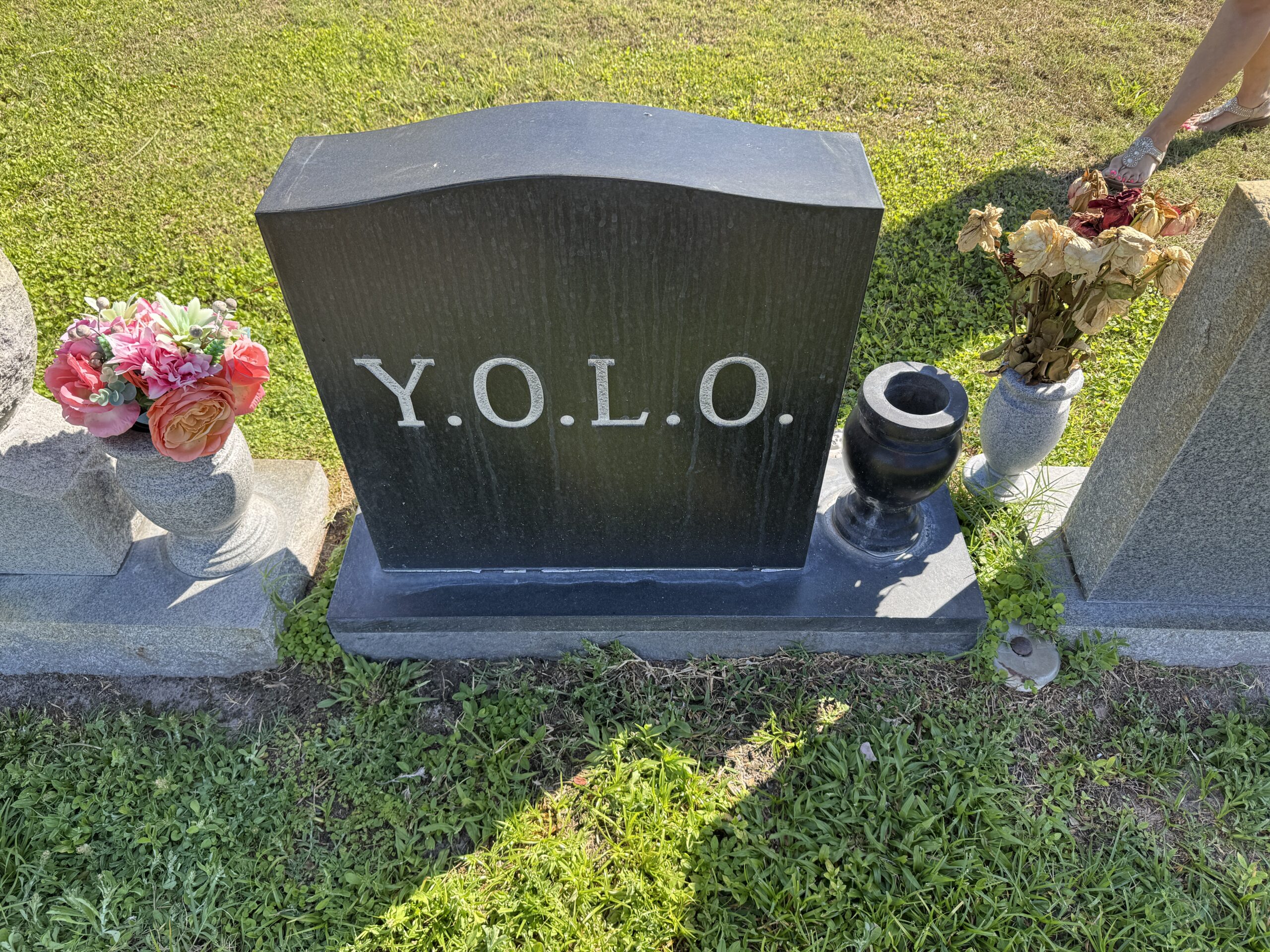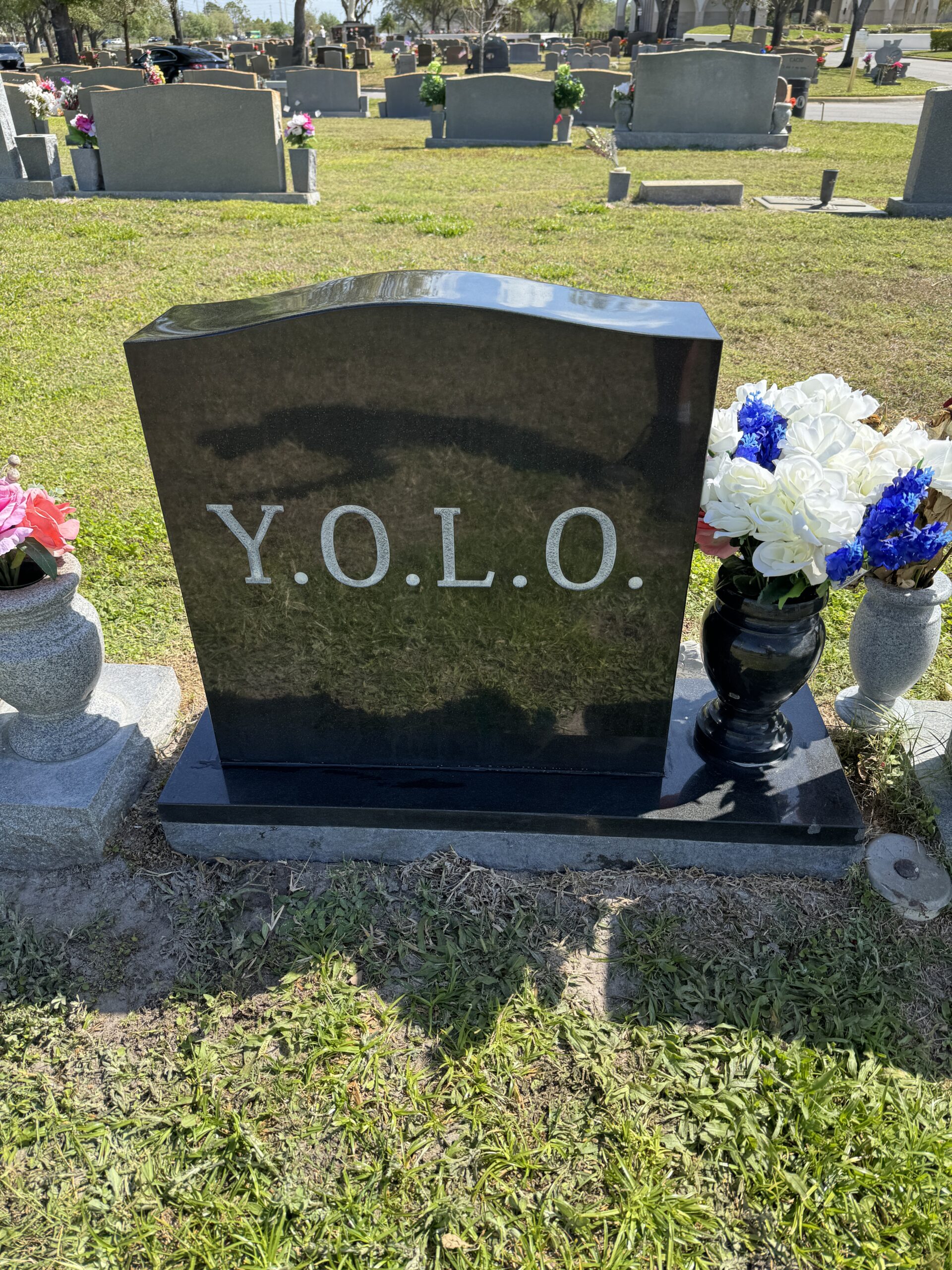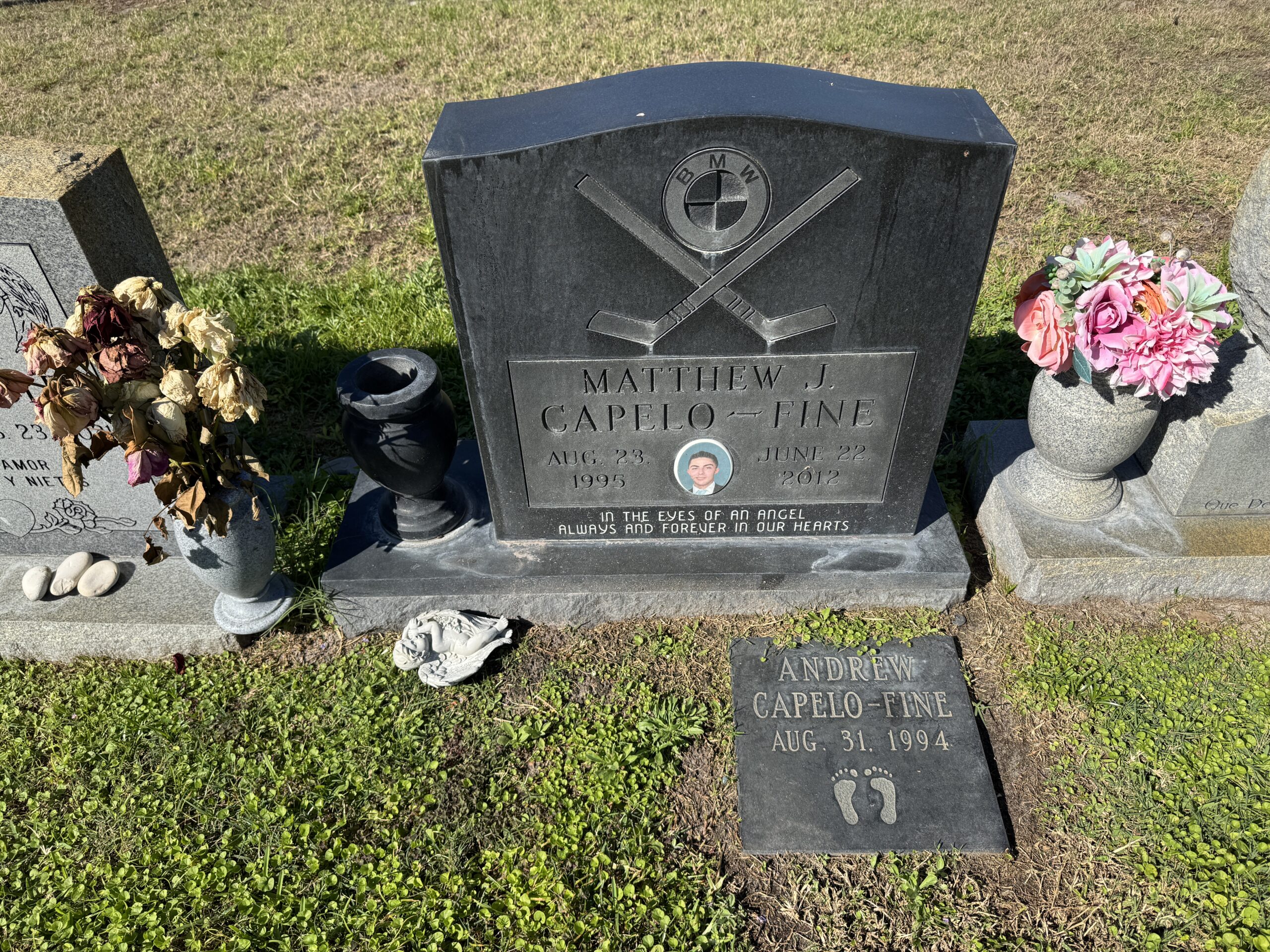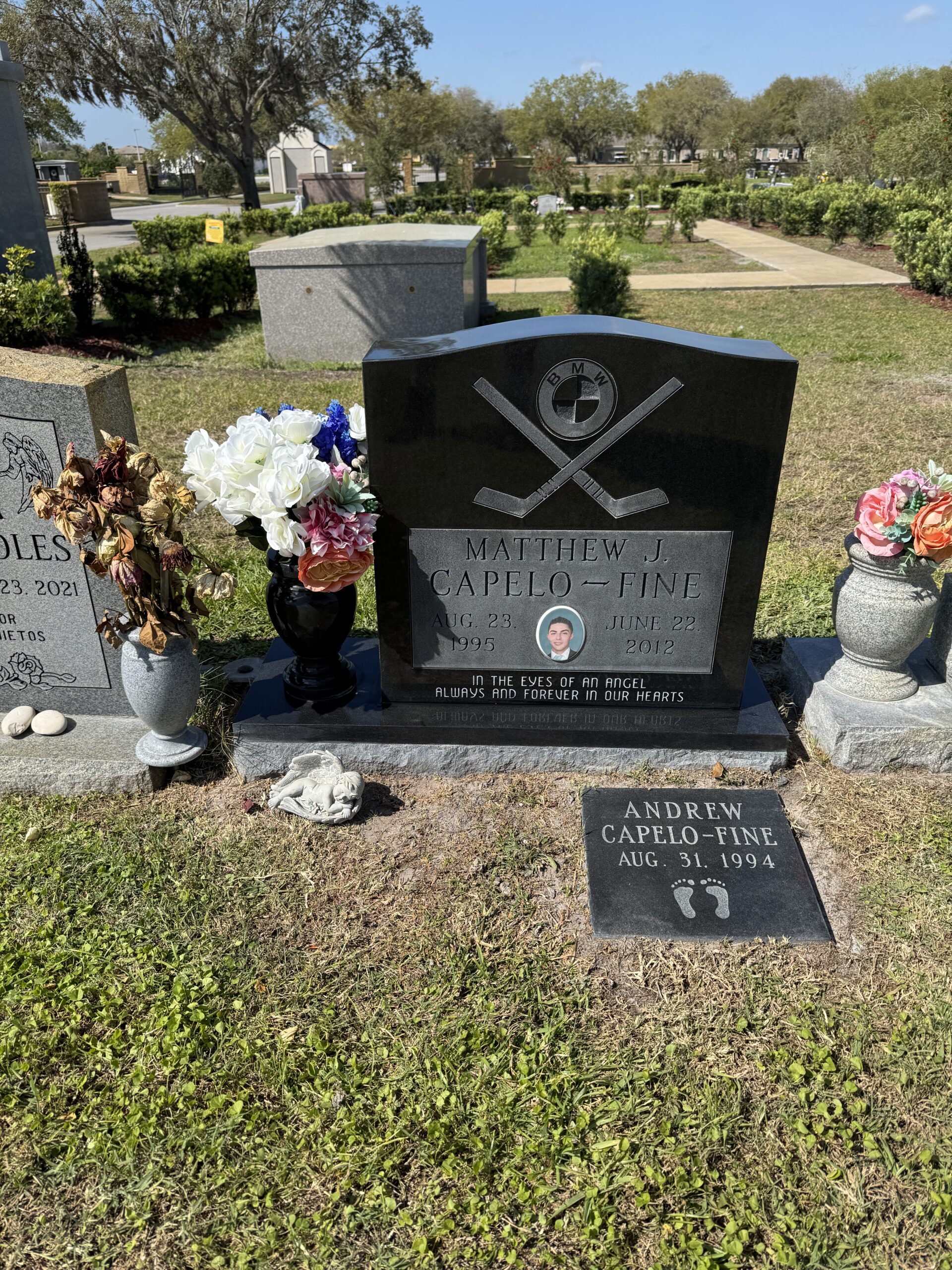How we perform cleanings
Cemeteries practice a heavy watering schedule to keep the grass green in the summertime months here in the State of Florida. The grass likes the calcium and iron content, but it is the granite’s worst enemy. When the irrigation runs and wets the stones, the sun will bake the hydrogen off the stone leaving the pesky remnants of what was being carried with the water. This results in a hardened calcified layer covering the beautiful polish. This is more noticeable on darker colored granite.
Polished Colored Stone Cleaning
We remove the calcium by using elbow grease and abrasives that do not hurt the finish. We also polish the stones using water that we bring from outside of the cemetery to enhance the polish and remove trace amounts of calcium.


This is a customer example from a cemetery that has heavy calcium content in their irrigation system.


The foot stone in the foreground was not made from the same quality of granite that the headstone was. Results between variations of granite quality can happen from time to time.
Gray Granite / Rough Edge Cleaning
Rock edged granite is coarse and full of random angles. This surface is prone to algae and lichen growth.
In some instances iron stains are present on gray granite due to irrigation systems.
These surfaces cannot be dealt with in the same manner as described above.
We use industry specific chemicals with lots of water that we bring in from off-site to help flush the pores of the stone.
These chemicals are designed around monument preservation and will not hurt the stone when applied properly.
We do not use bleach, vinegar, or any cleaners that you would find in the driveway cleaning industry.
Those chemicals will etch granite causing permanent damage.
